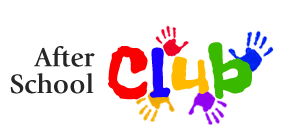Upcoming School events
Phonics
How do we teach word recognition:
At Cogenhoe Primary, we teach phonics using the linguistic phonics programme Essential Letters and Sounds. It is effective in teaching pupils to read, spell and write because it starts from what all children know from a very early age – the sounds of their own language. Then, using a systematic approach, it teaches them how these sounds are coded within our writing system. For example, they will be taught that the letters ‘m-a-t’ blend together to make ‘mat’. Following the ELS programme, it is ensured that these sounds are taught in a particular order to build children’s learning gradually.
The children are taught to decode and encode through explicit teaching and practice of these skills and concepts:
Skills
- Blending
- Segmenting
- Phonic Manipulation
Concepts
- letters are symbols that represent sounds
- sounds can be spelled using 1,2 3 or 4 letters
- the same sound can be spelled in more than one way (rain, break, gate, stay)
- many spellings can represent more than one sound (head, seat, break)
How does this look in the classroom:
Across the Early Years and Kst1, children have a daily phonics lesson following the programme. The structure and simplicity of lessons make it a programme accessible to all learners and helps them to make excellent progress with their reading and spelling. The lessons are carefully structured and consistently applied across the Early Years and Key Stage One.
What order are the sounds taught in:
New sounds are taught each day, with some review days and weeks to help children practise what they’ve learned.
Grapheme Sheet Phase 2
Grapheme Sheet Phase 3
Grapheme Sheet Phase 5
When do they start phonics:
Your child will start their Essential Letters and Sounds journey as soon as they begin school with us. We are committed to unlocking the world of reading as soon as we can. They will bring home three books:
- a phonetically decodable book linked to their stage of learning
- a book linked to the ELS scheme
- a reading for pleasure book of their choosing (from January in Year 1)
It is here where their reading adventure really begins. It is magical to watch how children start to realise that the letters on the page represent sounds and overtime how those sounds blend together to make words!
Phonics Screening Check
At the end of year 1, your child will sit a National phonics test (this is called the Phonics Screening Check) where they are asked to read (decode) 40 words. We report their score to you at the end of the year. Usually, there is a pass mark of around 32. More information about the Phonics Screening Test can be found here.
How can I help my child at home?
To best support your child for success in early reading, we recommend that you read with your child at least 4 times a week. When children re-read words and sentences that they can decode (sound out) until they are fluent (read with ease and precision), they will have the greatest opportunity to achieve true fluency and comprehension. Spending just 10 minutes a day reading with your child will hugely support them in their journey to becoming an independent reader. Another key way to support your child is to read to them too – share exciting and engaging books together.
Pronouncing Pure Sounds:
When children are learning to read, to enable them to blend sounds together to form words, we need to pronounce the sound clearly. Children learn to read letters or groups of letters by saying the sounds they represent out loud. Make sure you don’t add ‘uh’ onto the end, so for ‘m’ say ‘mm’ not ‘muh’.
You can use these examples below to support you:
Parental support




